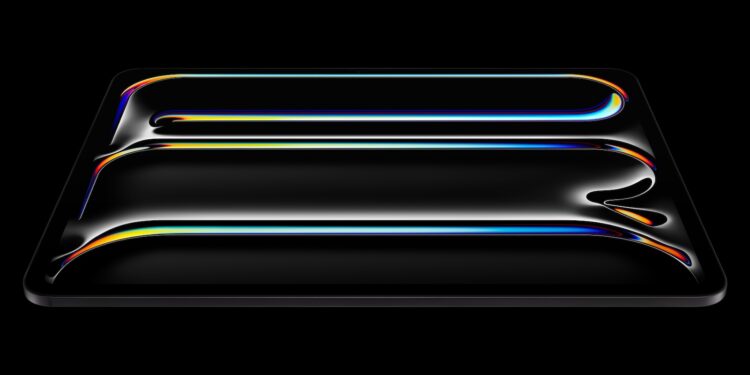Apple has been a pioneer in the technology industry for years, but even a giant like Apple faces challenges from time to time. Currently, weak demand for the OLED iPad Pro models is making headlines. Sales figures are falling well short of expectations, which affects not only Apple but also one of its main suppliers, LG Display.
OLED technology is considered a milestone in display development. Apple first integrated this technology into its iPad Pro models in 2024 to offer better image quality, higher energy efficiency and an impressive contrast ratio. But despite the innovative technology, the devices have not sold as expected. Instead of the originally forecast 10 million units, market researchers now only expect 6.7 million sales in 2024. This unexpected development has led to LG Display having to fundamentally adapt its production strategy.
Weak sales figures for OLED iPads
The iPad Pro models with OLED technology were introduced in May 2024. With 11- and 13-inch displays, they were the first Apple devices with this technology for larger screens. Expectations were high: forecasts assumed that around 10 million devices could be sold by the end of 2024. But the reality is different. According to Display Supply Chain Consultants (DSCC), these figures were drastically revised downwards in October 2024. Current estimates are only 6.7 million units. This weak demand affects not only Apple directly but also its supplier LG Display, which manufactures the OLED panels for the iPads.
Adjustment of production at LG Display
LG Display originally focused its production line on OLED panels for tablets and PCs (via The Elec). However, the lower orders for the iPad Pro models have led to a sharp drop in the capacity utilization of this production line. To offset the losses, the company is now planning to convert the existing production line for iPhone OLED panels. What's special about this is that instead of building a new production line, which would cost around 1.5 billion US dollars, the existing infrastructure will be adapted. This adaptation requires only minimal modifications and is significantly cheaper than a completely new investment.
Technical differences between iPad and iPhone OLED panels
The change in production line is technically feasible, but presents specific challenges for LG Display. The OLED panels for iPads use glass substrates with thin film encapsulation (TFE), while iPhone panels use a flexible polyimide substrate with a single emissive layer. This means that production processes must be adapted to meet the requirements of the iPhone panels.
Future of OLED Technology at Apple
The current development shows how dynamically the technology industry must act in order to react to market developments. Apple plans to use OLED technology to expand to other product lines in the coming yearsAn OLED version of the iPad Air could be launched in 2026, although weak OLED iPad Pro sales could also have an impact here. Apple's 14- and 16-inch MacBook Pro models could also be switched from mini-LED to OLED from 2026.
Apple and OLED: The way forward despite setbacks
The sluggish sales of the OLED iPad Pro models show that even established companies like Apple are not immune to market fluctuations. For LG Display, this means a necessary adjustment of the production strategy in order to offset losses while focusing on the growing demand for iPhone OLED panels. For you as a consumer, the development remains exciting. OLED technology continues to be a central part of Apple's future strategy. It remains to be seen how the company will overcome these challenges and what innovations it will bring to market in the coming years. The next steps, especially the introduction of OLED in further product ranges, could be trend-setting for the entire industry. (Image: Apple)





